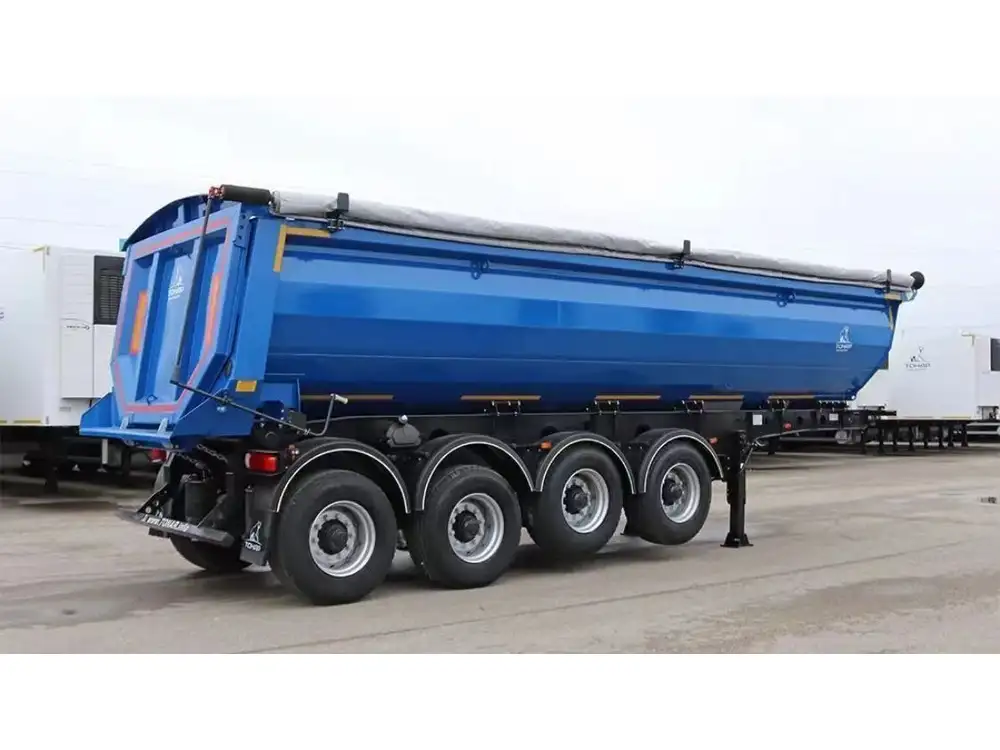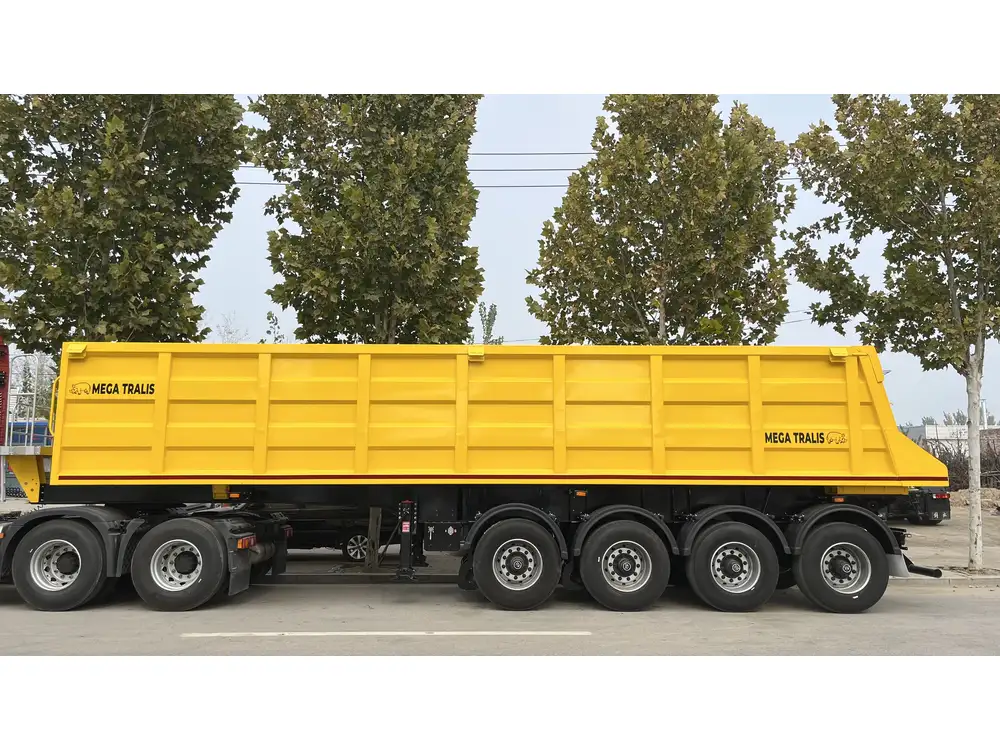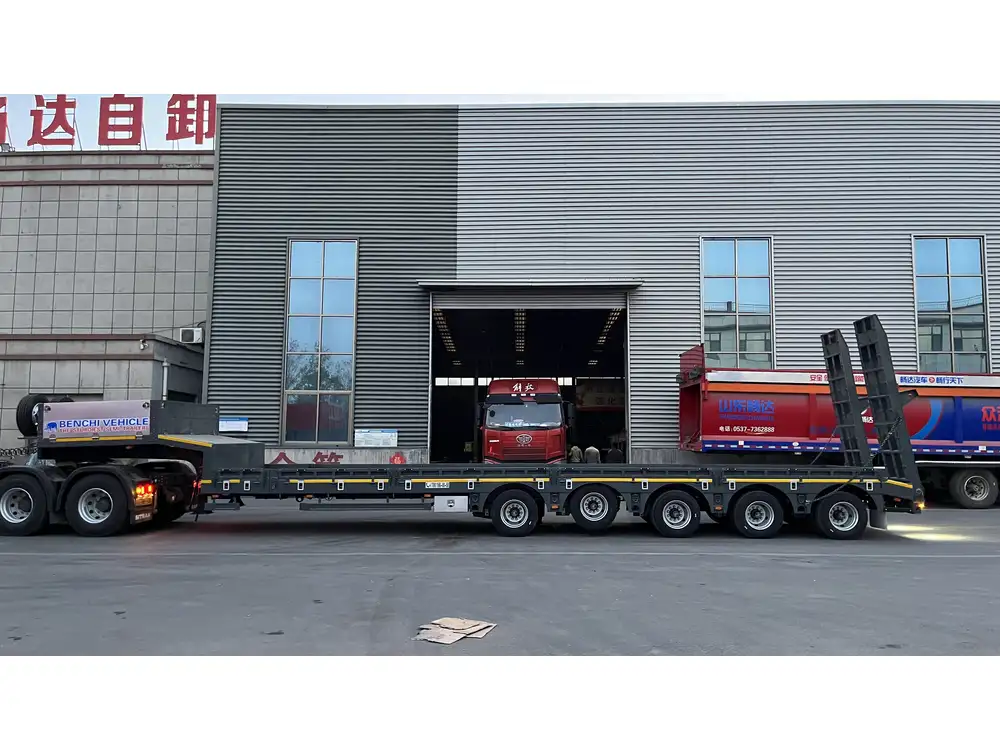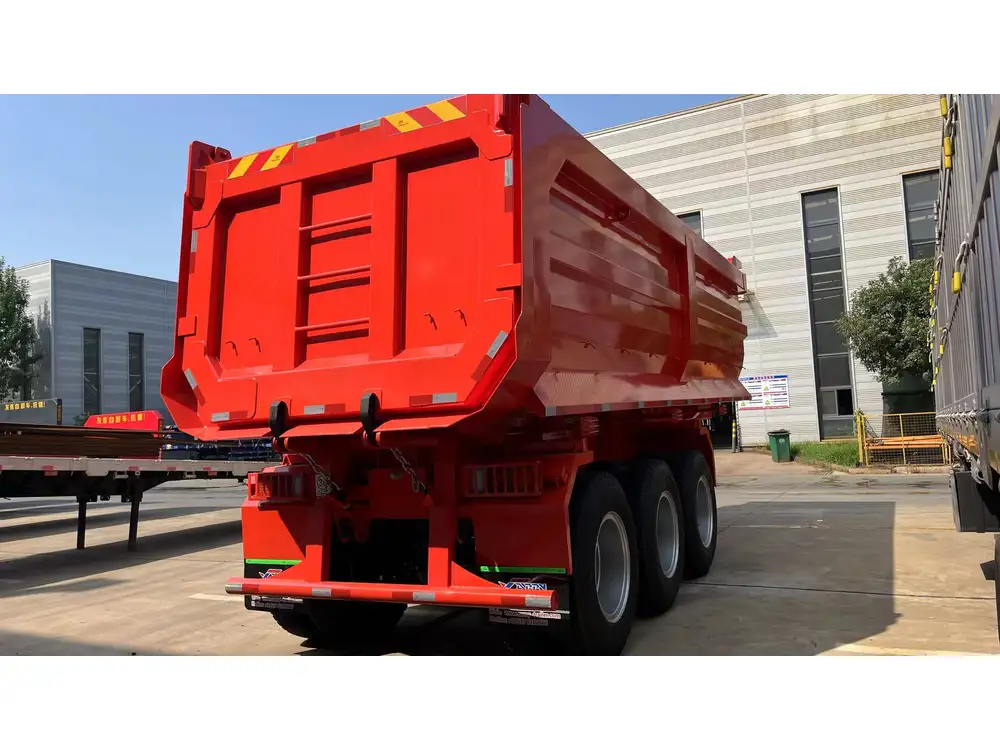Transporting cargo on a flatbed trailer is a common practice in the shipping and logistics industry. However, executing this task safely and efficiently requires careful planning, knowledge of best practices, and adherence to regulations. In this comprehensive guide, we will delve into the essential strategies and techniques for transporting loads on flatbed trailers, ensuring maximum safety and effectiveness.
Understanding Flatbed Trailers: Why They Are Essential
Flatbed trailers are versatile vehicles designed for transporting a variety of oversized or unconventional cargo. Unlike enclosed trailers, flatbed trailers allow for easy loading and unloading from all sides, making them ideal for heavy machinery, construction materials, or even large vehicles.
Types of Flatbed Trailers
| Trailer Type | Description | Best Uses |
|---|---|---|
| Standard Flatbed | Simple platform with no sides or roof | General freight, large equipment |
| Step Deck | Two deck levels to handle taller loads | Taller loads that cannot fit under bridges |
| Double Drop Deck | Two drops in height for extra tall loads | Very tall items |
| Stretch Flatbed | Extended deck to accommodate large shipments | Over-length cargo |
Each type has its own specifications and applications, but the core fundamentals of loading and securing cargo apply uniformly across all flatbed trailers.

Step-by-Step Guide to Transporting a Load on a Flatbed Trailer
Step 1: Assess the Load
Before anything else, it is crucial to assess the dimensions, weight, and shape of the load. This will help in the decision-making process regarding loading strategy, securing methods, and determining any specific equipment required.
Load Characteristics to Consider
- Weight: Ensure that your flatbed trailer can handle the weight of the load. Adhere strictly to weight limits mandated by local regulations.
- Shape: Understand the geometric configuration of the load, which can affect how it will sit on the trailer.
- Fragility: Analyze the load for any parts that require special attention during transport to prevent damage.

Step 2: Prepare the Flatbed Trailer
Preparing the trailer is as vital as loading the cargo itself. Performing a pre-load inspection can significantly enhance safety and efficiency.
Pre-Load Inspection Checklist
- Tires: Check for proper inflation and any visible damage.
- Brakes: Ensure that the braking system is functioning effectively.
- Lights: Verify that all trailer lights are operational, including brake lights and turn signals.
- Securing Points: Inspect binding points and accessories for wear and tear.
Step 3: Load Placement
Correct load placement is fundamental to is important for maintaining balance and stability during transport. Follow these principles:
- Center of Gravity: Position the load as low to the deck as possible, and ensure that its center of gravity is balanced.
- Distribution: Distribute weight evenly across the trailer to prevent tipping and uneven wear on tires.

Step 4: Securing the Load
Properly securing the load is perhaps the most critical aspect of transporting cargo on a flatbed trailer. Failure to secure the load can lead to accidents, damage, and loss of cargo.
Securing Methods
- Straps: Use straps made of high-tensile strength materials, ensuring they are properly rated for the load’s weight.
- Chains: In certain conditions, chains are a more stable option, especially for heavier, irregularly shaped loads.
- Tarps: For sensitive cargo that needs protection from the elements, appropriate tarping can be vital.
Securing Techniques
- Winches: Utilize winches with heavy-duty straps to secure loads tightly.
- Edge Protection: Employ edge protection devices to prevent straps from cutting into the cargo.
- Corner Guards: Use corner guards to maintain the integrity of your cargo while strapping it down.

Step 5: Compliance with Regulations
Familiarize yourself with local, state, and federal regulations regarding transporting loads. This includes weight limits, width restrictions, and necessary permits for oversized loads.
Key Regulations to Consider
- Federal Motor Carrier Safety Administration (FMCSA) guidelines.
- State-specific load limits and permits.
- Load securement standards outlined in the DOT regulations.
Step 6: Road Safety Measures
As you prepare for the road, ensure that the driver is ready for the journey. They should be mindful of safety protocols and prepared for emergencies.

Driver Protocols
- Regular Breaks: Ensure the driver takes scheduled breaks to prevent fatigue.
- Awareness: Encourage awareness of road conditions, including weather and construction zones.
- Speed Regulations: Encourage adherence to posted speed limits and safe driving practices.
Step 7: Monitoring During Transport
If possible, implement a tracking system that enables real-time monitoring of load conditions during transit. This can be through GPS technology or regular check-in with the driver.
Step 8: Unloading Procedures
Upon reaching the destination, ensure a safe unloading procedure is followed.

Key Unloading Steps
- Site Preparation: Clear the unloading area beforehand to facilitate a safe unloading process.
- Assisted Unloading: Utilize cranes or forklifts for heavy loads where necessary.
- Gradual Unloading: Unloading should be conducted slowly to maintain control of the load.
Common Challenges in Transporting on Flatbed Trailers
Transporting loads on flatbed trailers can present several challenges, including:
- Weather Conditions: Rain, snow, and high winds can complicate loading, transport, and unloading procedures.
- Road Hazards: On the road, drivers may face unexpected obstacles that can affect the safety and integrity of the cargo.
- Load Shift: Over time, a load can shift during transport, affecting stability.
Strategies to Mitigate Risks
| Challenge | Recommended Strategy |
|---|---|
| Weather Conditions | Monitor forecasts and adjust schedules accordingly |
| Road Hazards | Stay informed of road conditions and closures |
| Load Shift | Continuous monitoring and mid-journey checks |

Conclusion: Mastering Flatbed Trailer Transportation
Transporting loads on flatbed trailers involves a combination of careful planning, execution, and knowledge of safety protocols. By following these essential steps and being aware of potential challenges, you can enhance your efficiency and safety in transporting goods.
Investing time in understanding the complexities of your load, preparing your trailer, and adhering to regulations ensures that your operations run smoothly, allowing you to focus on growing your business without compromise. Whether you are operating a small fleet or managing a large logistics enterprise, mastering the nuances of flatbed trailer transportation can significantly improve your overall performance in the logistics and transportation industry.
This structure not only aims to cover the topic of transporting loads on flatbed trailers comprehensively but is designed to engage readers effectively. Employing varied sentence lengths and dynamic vocabulary enhances readability and captures audience retention.



